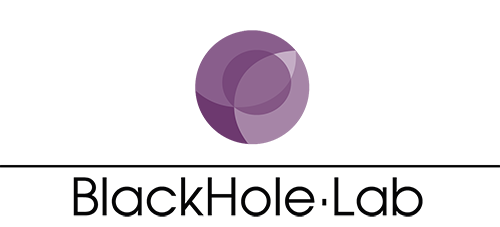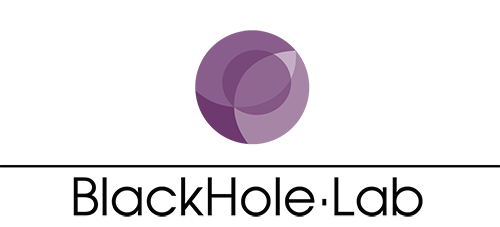Frequently Asked Questions
A question? Have a look here…
About Services
How will the installation and training take place?
The main goal of our company is that, after the installation and training in his laboratory, any researcher can easily manufacture his own microfluidic chips by himself.
Regarding the installation, we first ship all necessary items to your laboratory. Then, one of our researchers specialized in soft-lithography will come to install the micro-fabrication station in your laboratory.
We propose fitted tools and processes in order to easily produce high-quality microfluidic chips. However, it is often preferable to adapt the process to each laboratory’s requirement and to ensure that members of the laboratory fully understand the process and the critical parameters of their own cases. This is the purpose of our training.
Following the installation, we optimize, in your laboratory, the necessary micro-fabrication processes required for your future experiments. Once our specialist has finished to optimize those processes, he updates your micro-fabrication station’s tutorials. During the training, he makes with your team every step of production, explaining all technical details that enable them to understand and optimally produce microfluidic chips. The training ends when each team member is able to perform all stages of microfluidic chips manufacturing.
How long does the training take?
It depends on each laboratory and your required technologies. Generally, most of the laboratories have a fully trained, independent and competent micro-fabrication team within a week after our venue. Within this week, our specialist is able to organize different training sessions, and is able to train up to 15 researchers.
What are the installation and start-up times?
Once purchase order and payment are received, the conventional time to have a working micro-fabrication station in your laboratory is about 30 days (depending on the planning installation). Depending of your needs, this delay can be modified.
How will it take place if I don't want the installation and training option?
If you do not want to benefit from the installation, we will ship your order after receipt of payment directly to your laboratory. We will also provide you with our tutorials. First, these tutorials will help you install and connect the instruments, and then, they will enable you to optimize by yourself your micro-fabrication processes to get reproducible and high quality microfluidic chip manufacturing. Anyway, our team will stay at your disposal to enable you to get the better results with a quick and better use of your station.
What are the tutorials?
Our tutorials are technical manuals detailing step by step the installation of your equipments and your soft-lithography processes. Those didactic materials detail the way you have to connect the instruments but also the understanding and attitude to adopt towards the physical parameters (such as exposure time, humidity, temperature…). These documents are not only installation instructions, they are here to describe to you in details each soft-lithography process and to explain to you which important parameters you should always have in mind to get the best result.
Is it possible to meet you and have a demo?
If you are interested, we have a showroom in Paris. We will welcome you with pleasure. Otherwise, we are frequently present at international conferences principally on microfluidic conferences. On our events webpage you can have a look on our conferences’ planning.
How will it take place if I need After Sale Service?
In order to simplify your life and to quicken the reparation process, if you meet any malfunction with any of your equipment under warranty, you can contact us directly. We will proceed with you to an audit of the functioning of the instrument. If necessary, we will arrange ourselves the after sale service for laboratories using micro-fabrication station. If you have non-material issues in achieving your process, please also contact our research team in order to get the best advice.
About My Lab & Me
What is the expertise level in microfabrication required to manage a station?
The microfabrication station service enables everyone to make high quality microfluidic chips regardless of the initial technic level in the field. No microfabrication expertise is initially required.
What must I do and have in my lab?
The only thing you have to do on your side is to make sure you have at least 1m2 free in a functional hood, 2m2 free on a nearby bench top and access to at least one electrical plug. An access to pressure and/or vacuum line(s) is very convenient but not essential, we have solutions in the absence of these facilities. For the rest, our team will take care of fitting all our equipments to your laboratory.
Which fume hood type do I need to avoid particle contamination?
A conventional chemical fume hood is enough. Concerning type of hoods, there are two points: the protection of the user and the particles contamination.
The first goal is to protect the user from solvents’ vapor, a conventional chemical vapor extractor fan can suck air under the hood, rejecting it to the outside.
The problem of the particles contamination is quite different. To “remove” the particles under the hood, it is better to take a laminar flow hood, then 70% of the air is recycled, filtered (99% purified particle > at 0,3 µm for HEPA filters) and it enables you to press the particles of the air on the surface of the fume hood and then prevent risk of particles on the wafer. In a chemical fume hood particles issue is overcome by equipments’ cleaning (including fume hood) and the wafer(s) at each stage. Even if a laminar fume hood is better, our equipment and process have been optimized to enable you to fabricate high-grade microfluidic chips with a conventional fume hood.
What do I need to avoid disturbances by ambient light?
Since the photoresist cross-linkage is initiated by UV light, the resin has to be kept away from these wavelengths. The neon light does not emit in the wavelength range of the SU-8 cross-linkage with an UV light intensity close to 0 mW/cm2 at 365 nm. On the other hand, the sunlight can cross-link the resin with UV intensity around 1 mW/cm2 so the resin has to be hidden from the sunlight during the process. Use UV filter on windows if necessary (you can contact our team for recommendation about windows UV filter).
For which application can I use microfluidic PDMS-based chips?
The PDMS chip is a really convenient tool and can be used for a lot of different applications. It can be used to do classical fluidic functions such as mixing, separation, creating droplet, performing chemical reactions etc. Since it is transparent, it can be used for any optical application, and its good biocompatibility makes it a good option for bio application. If you want to check the pertinence of your application, you can send us an email and we will be happy to discuss about it with you.
About Technical
Which resolution can be achieved?
You can achieve the same resolution as in a cleanroom. And so have a resolution of about few micrometers (up to 2 µm) by respecting our processes. You can even control the width of your channels to several hundred nanometers by varying the parameters of soft-lithography. Of course, the resolution depends on the wanted aspect ratio.
Which aspect ratio can be achieved?
You can achieve the same aspect ratio as in a cleanroom. A classic value of 1:5 can be obtained by perfectly respecting our processes. It means that you can achieve for example a microfluidic channel of 1 µm height with 5 µm width.
At which wavelength does the UV Lamp work?
The UV lamp offers a perfect monochromatic exposure : the wavelength is centered at 365 nm with a bandwidth lower than 10 nm. The value, 365 nm, is chosen because it matches the best exposure wavelength of the SU-8, our negative photoresist used to do the mold, but other wavelength can be chosen, if needed, at 385 nm or 405 nm.
How long does it take to do microfluidic PDMS-based chips?
Doing a master mold using SU-8 photoresist can take between 1 and 4 hours depending on the height of the pattern. Once done, the mold can be used, as many times you want. Then the fabrication of a run of microfluidic PDMS-based chips takes around 3 hours.
How many microfluidic PDMS-based chips can I make?
You can reproduce as many microfluidic PDMS-based chips as you want, using the same SU-8 mold. The number of chip patterns on your mold defines the number of chips you will get after each replication.
At which temperature can I use the microfluidic PDMS-based chip?
The cured PDMS can be handled in a temperature range of -45°C to 200°C.
At which wavelength can I use the microfluidic PDMS-based chip?
The PDMS is transparent at optical frequencies (240 nm-1100 nm), which facilitates the visual observation of the content of micro-channels under the microscope.
About Administrative Purposes
How does the purchase takes place?
After the reception of the purchase order, we provide your administrative service with a proforma invoice. Then, after the payment, we deliver equipments and accessories directly in your laboratory. If you have asked for training, our team installs the equipment and performs the first protocols’ tests and adaptation of the microfabrication station in your laboratory. Thereafter, our team conducts training of your team.
How are you managing the customs procedures?
We work with suppliers familiar with international trade. With our other activities, we work with laboratories around the world. We are almost daily subjected to customs procedures. By learning in the past to optimize the process of customs, we have strongly emphasized this point in our choice of partners in order to avoid our customers wasting time in custom procedure.
About Exceptions
May I have each item's prices?
We only provide prices for each of our different microfabrication stations. We can customize the contents and then price packages to suit your needs. However, we never do instruments’ retail to be sure to provide fully functional complete stations. We provide complete and turnkey microfabrication stations because it enables us to accurately predict different types of interactions between the instruments and thus avert any eventuality. So we do not provide quotes for separate elements because we do not sell them separately. However, a list of all the equipments will appear in your quote. Our expertise lies in adapting equipment and optimizing all the elements together.
Is it possible to purchase only one item of a station?
If you just need one particular item, what we can do is put you directly in touch with a sales engineer of the manufacturer of the item you wish. He will give you directly a quote.
Can you remove chemicals and/or accessories of the purchase?
We understand that some researchers have probably their suppliers and their own distribution network of particular elements. We can remove them in the quote if you absolutely don’t want to use our solutions. Nevertheless, this does not change so much the amount of the quote. In addition, we wish to inform you that, in this case, we cannot guarantee the perfect functioning of the micro-manufacturing processes. Our tutorials will help you understand the ins and outs related to chemistry or the utility of certain components/accessories that will enable you to optimize your process.






